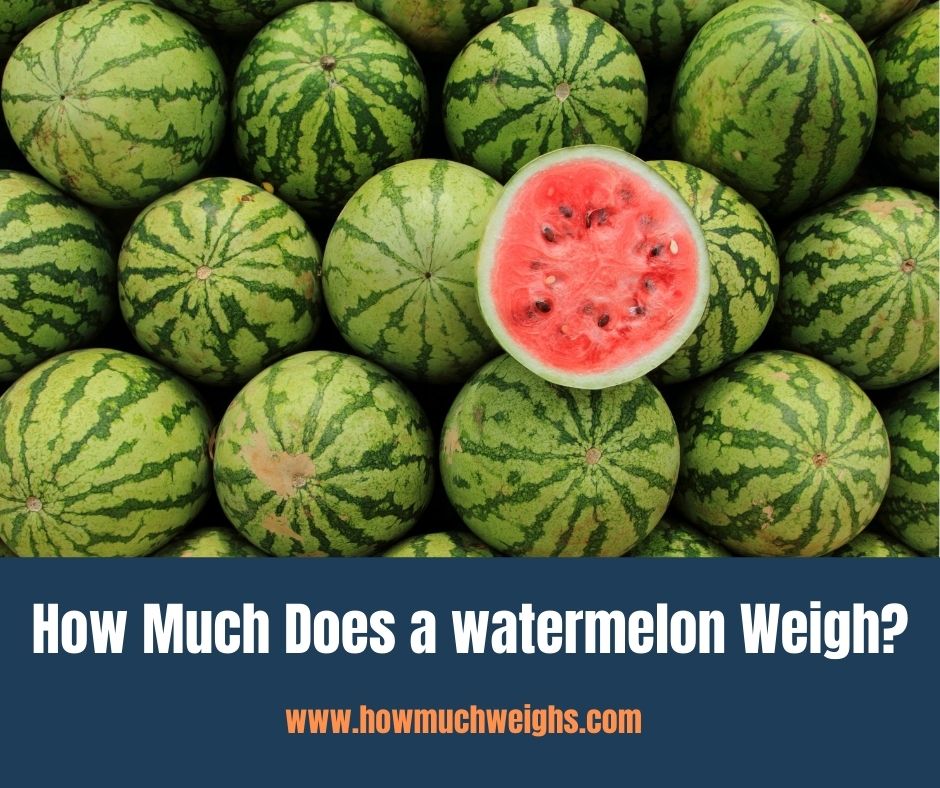What is a Watermelon?
Watermelons are a fruit that is native to Africa, but is now grown in many places around the world. The watermelon’s outer part is called the rind.
It has a green color when it is unripe and changes to an orange color when it is ripe. Inside the watermelon there are seeds that are surrounded by white, sweet, juicy pulp.
The juicy, refreshing fruit of the watermelon is a favorite among all members of the summertime family. Regardless of whether you love to eat these fruits on their own or use them as a refreshing ingredient in recipes, there are some things you may not have known about this particular produce.
If you are curious, here are 5 interesting facts about watermelons that may change your perspective on this delicious product.
How Much Does a Watermelon Weigh?
A large watermelon weighs about 20 pounds, which is about four small watermelons at five pounds each, according to the Watermelon Board. You’ll get about 66 wedges from a 20-pound melon if you quarter and slice it into 3/4-inch thick wedges. As a result, one pound of watermelon yields three wedges.
How much watermelon is too much?
Water makes up more than 95% of watermelon. Watermelon contains about 5 grams of sugar per 100 grams, the majority of which is glucose and sucrose, with a small amount of fructose.
The World Health Organization recommends a daily sugar intake of 25 grams, with a maximum of 50 grams. Watermelon has 25 grams of sugar per 500 grams. Every day, about 500 grams of watermelon should be consumed.
What is the Weight of a Watermelon in GRAMS?
You must examine the receipt from the store where you purchased it. The price per kilogram or pound (depending on your nation) as well as the total weight should be specified. To calculate the number of grams, multiply the weight in kilograms by 1000. (or grams if you are in the USA). Multiply by 454 if the weight is stated in pounds.
Types of Watermelons
Grandprize
Grandprize Watermelons are juicy and sweet with extra large seedless watermelons that offer an unforgettable eating experience.
Grandprize watermelons are seedless, making it perfect for travel or when you are in a hurry. This is because these melons are easy to cut up into whatever shape you please, since it does not have any pesky seeds getting in the way.
Related Post: 14 Common Household Items That Weigh 200 Grams
Everglade
Everglade watermelons are a hot commodity in the South Florida area. It’s important to know how to choose this fruit because if you are not careful, you might fall prey to the many scams.
If you are not sure about how your melon should look, ask an employee at the store or just google it. All watermelons should be heavy for their size and have a deep yellow spot on the bottom that is almost as wide as it is high. Everglade Watermelons are a variety of watermelon with a deep green exterior and a bright orange interior.
The watermelons are typically grown in the Everglades region of Florida. They can be eaten either fresh or as canned slices, and they have a taste that is similar to other ‘old fashioned’ varieties.
Spineless Supreme
Spineless Supreme Watermelons are the perfect solution to your watermelon needs. At Spineless Supreme, we understand that picking out the perfect melon can be difficult. That’s why we’ve compiled a list of 5 types of watermelons for you to try this summer.
San Martin
San Martin Watermelons are known for their bright red skin and sweet, juicy flesh. These produce originate in San Martin, Chile and are sold at farmers markets during the summer season. Unfortunately, due to the inability to efficiently regulate the growing process, these delicious fruits are shipped out of the country before they reach their true peak ripeness.
Many people enjoy eating this fruit because it is different than many other types of watermelon that are available in North America.
Ebano
Ebano Watermelons is a small company in California that has been producing watermelons for over 40 years. The company has been able to produce one of the best tasting watermelons because they have a process called “evapocom;” which they have adapted from Europe, and it consists of an evaporation process that removes all the salt, sugar and other minerals from the watermelon.
How Do You Know Watermelon It Is Fully Ripe?
A perfectly ripe watermelon has a deep, resonant sound and a pleasant texture. It should feel sturdy, not too light or too heavy. When you pick it up to examine it, the bottom half of the watermelon should be somewhat greenish yellow and not white.
Touching a ripe watermelon will also tell you that it is fully ripe- the surface will feel slightly rough and there should be some give when pressed with a finger. When deciding if a watermelon is ripe, look for a vibrant pinkish-red skin or yellow stripes.
If the green stem has pulled away from the fruit, it is time to harvest the juicy golden treasure.
There should be no signs of green anywhere on the surface of the watermelon and it should feel heavy and solid to touch. When you press on the skin, it should give and then bounce back without leaving an indentation.
In conclusion, watermelon is a healthy and nutritious food that can be eaten all year long. It has an abundance of vitamins to offer, like vitamin A, C, and B6.
Not to mention it tastes great! For those who can’t find the time during the work week to eat watermelon, you should consider buying pre-cut pieces at grocery stores to make things easier for yourself.
Related Article:
How Much Does an Apple Weigh?
How Much Does a Cauliflower Weigh?




